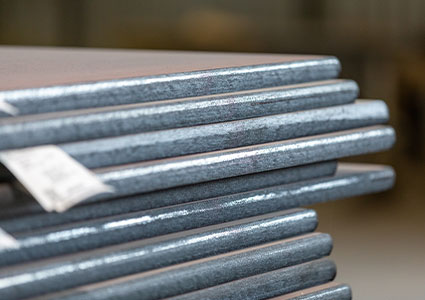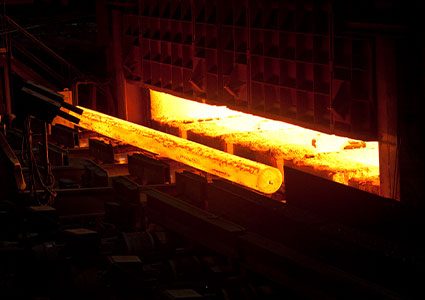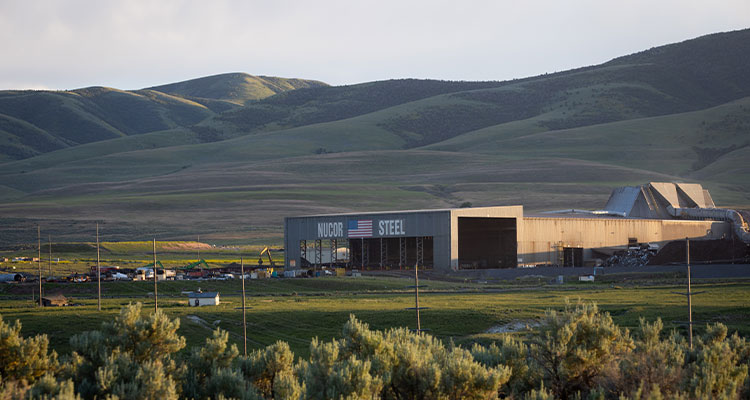Strength, innovation, and sustainability are Nucor’s guiding principles when it comes to construction solutions
Committed to building powerful partnerships, Nucor Corporation (Nucor) is a leading provider of the world’s strongest, highest quality, and most sustainable steel and steel products. Nucor’s Construction Solutions team is dedicated to collaborating with customers every step of the way from the initial stages of design to project execution. With cross-functional expertise and innovative technical solutions, Nucor aims to help customers find the most effective solution for their project, whether focusing on efficiency, cost, or sustainability.
 “Nucor has historically focused on bringing higher strength steel to the market to evolve the construction sector’s efficiency,” opens Kim Olson, Director of Construction Solutions. “We’ve brought it to market in two ways; one fostering the spirit of innovation and trying something new at all levels of our business, and the other is building the capability within our facilities to produce materials that aren’t typically found in North America.
“Nucor has historically focused on bringing higher strength steel to the market to evolve the construction sector’s efficiency,” opens Kim Olson, Director of Construction Solutions. “We’ve brought it to market in two ways; one fostering the spirit of innovation and trying something new at all levels of our business, and the other is building the capability within our facilities to produce materials that aren’t typically found in North America.
“As a result, our mills focus on innovation, finding ways to use materials more efficiently not only for economic reasons, but also for sustainability, as using less of something is a first step to decrease a project’s environmental impact. We’re currently developing a new grade of plate made to the ASTM A1066 certification, for instance, which would require much less preheating during fabrication. Whereas additional heat is typically required to ensure no cracking occurs, the chemistry of our new plate would enable less preheating to foster energy and time efficiencies. This would be an innovation for both the horizontal and vertical construction markets.”
Carbon efficiency
Turning to industry trends, Kim says: “Data center construction is a burgeoning market, and we are engaging with the industry in several ways. We’re not only providing structural steel for columns, beams, metal deck, and rebar for the core and shell of data centers, but we’ve extended our capabilities to offer more than 90 percent of the steel products that go inside the data centers, such as servers, racks, cabinets, and pathway support structures.
“To strengthen our position in the data center market, we’ve recently acquired SW Data Products, a company that specializes in the ‘white space’ or the internal fit-out. Nucor can now help customers throughout the lifecycle of the data center, from the construction to even the recycling of the steel support structures for the servers when they need to be replaced to support new technology systems. We’re vertically integrated with an industrial recycler, so for a particular partner, we’ve been able to create a circular concept where we remove old cabinets in return for material credits, which can be turned into new steel server cabinets. That’s just one way we’ve been able to bring unique innovation to help data center operators not only get their facilities up and running but support them throughout the building’s lifecycle.”
Kim is also keen to highlight how Nucor is embracing sustainability and environmental responsibility. “Nucor thrives on its people; our teammates are what make Nucor unique in our ability to innovate,” she states. “Innovation is our roots, as we were one of the first electric arc furnace (EAF) mills in the US. For those not aware, there are two modern ways steel can be made: using primarily recycled materials to melt in an EAF to produce new steel, or the other method uses a basic oxygen furnace to turn extracted materials into steel. The latter is more impactful on the environment and is associated with higher greenhouse gas emissions, but few people realize that 70 percent of the world’s steel is produced through extractive methods, with just 30 percent made in EAFs. The opposite is true of the North American market where 70 percent of the steel made comes from an EAF.
“Nucor is committed to a 2050 net-zero, science-based greenhouse gas target as defined by the Global Steel Climate Council (GSCC), which includes Scopes 1, 2 and 3. We’re taking an active role when it comes to sustainability, from engaging with power suppliers to source renewable energy for our electric consumption to reducing our emissions. However, we also recognize that there is a cost associated with decarbonizing the steel industry at large, and there needs to be a genuine desire from project owners to decrease embodied carbon in their buildings.” 
With sustainability in mind, the construction industry is seeing increased demand for hybrid construction using a combination of steel and timber. “There’s a definite surge in the use of timber for construction projects due to its sustainability attributes, as it can naturally sequester carbon,” Kim elaborates. “While there are advantages and downfalls of using timber or steel alone, we can marry the two to maximize the benefits of both materials by creating an efficient structure that can be more carbon efficient. However, it’s important to use each material where it best performs, rather than applying a product where it may not be the most efficient or sustainable solution.”
Exciting future
On a more personal note, Kim shares her career journey to date. “Having been here for just under four years, I still consider myself a ‘Nucor baby,’” she laughs. “With a structural engineering background, I love seeing the fruits of my labor and Nucor’s Construction Solutions business interested me because we’re genuinely assisting customers, using our knowledge and insight to suggest what’s best for their project. We’re a team of professionals with varying construction experience from design and sales to metallurgy and fabrication, which we integrate with owners, developers, architects, and engineers to really add value to a project.
“We’re optimistic about 2025,” Kim says as our conversation ends. “Firstly, we hope to see a few more cuts in interest rates, which will enable some growth in the construction industry. We expect to see continued growth in the data center market and we’re also experiencing increased demand for significant projects like stadiums and their surrounding infrastructure, as well as airports, bridges, and renewable energy plants. More generally, anyone looking at the business five years ago would be surprised at where we are today, so the future could hold even more exciting opportunities for Nucor.”
Images courtesy of Nucor Corporation
nucor.com/construction-solutions
